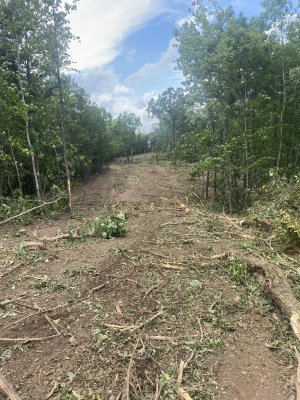FinSpur
Yearling... With promise
I am looking for opinions, ideas, and results on management techniques post timber harvest. The loggers will be done in the next couple of weeks.
It is 80 acres located in Central Arkansas that encompasses a single ridge that runs north and south, with steep ravines and semi-flat on top. I consulted foresters, marked every tree to remain(primarily white oaks and a few red oaks), and I also flagged the heads of my ravines to not cut the steeper areas.
Do I seed buckwheat immediately following to help prevent erosion? Do I wait until September October to try and get some clover and wheat down?
I would like to manage for native grasses and forbs on the majority of the areas that have been opened up, so what herbicide and when do I need to spray to stop undesirable stump sprouts/unwanted regen.
Prescribed fire will be a huge proponent of my management strategy, but do I wait until next winter to do a dormant season burn to start knocking down some of the slash? Or sooner?
Do I try to spread some native seed mixes this winter? Or do I wait to see what the seed bank responds with?
Just looking for any ideas or experience with managing post timber harvest. My number one priority is to prevent it from becoming a nasty thicket and removing all invasives. I plan on going in and doing follow up TSI in September.
It is 80 acres located in Central Arkansas that encompasses a single ridge that runs north and south, with steep ravines and semi-flat on top. I consulted foresters, marked every tree to remain(primarily white oaks and a few red oaks), and I also flagged the heads of my ravines to not cut the steeper areas.
Do I seed buckwheat immediately following to help prevent erosion? Do I wait until September October to try and get some clover and wheat down?
I would like to manage for native grasses and forbs on the majority of the areas that have been opened up, so what herbicide and when do I need to spray to stop undesirable stump sprouts/unwanted regen.
Prescribed fire will be a huge proponent of my management strategy, but do I wait until next winter to do a dormant season burn to start knocking down some of the slash? Or sooner?
Do I try to spread some native seed mixes this winter? Or do I wait to see what the seed bank responds with?
Just looking for any ideas or experience with managing post timber harvest. My number one priority is to prevent it from becoming a nasty thicket and removing all invasives. I plan on going in and doing follow up TSI in September.

